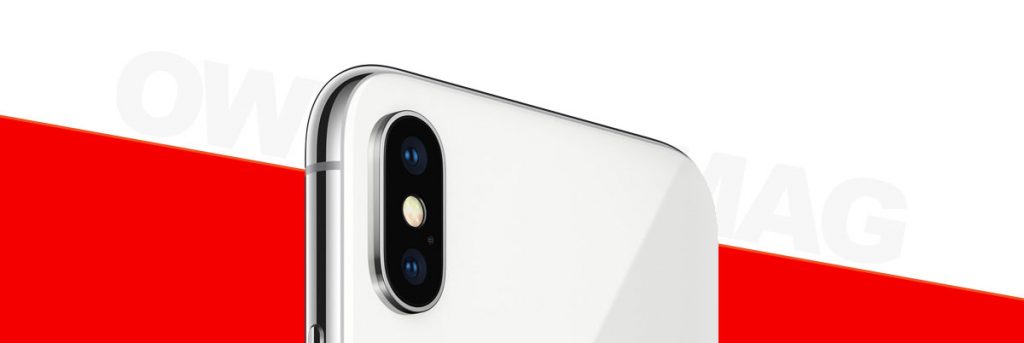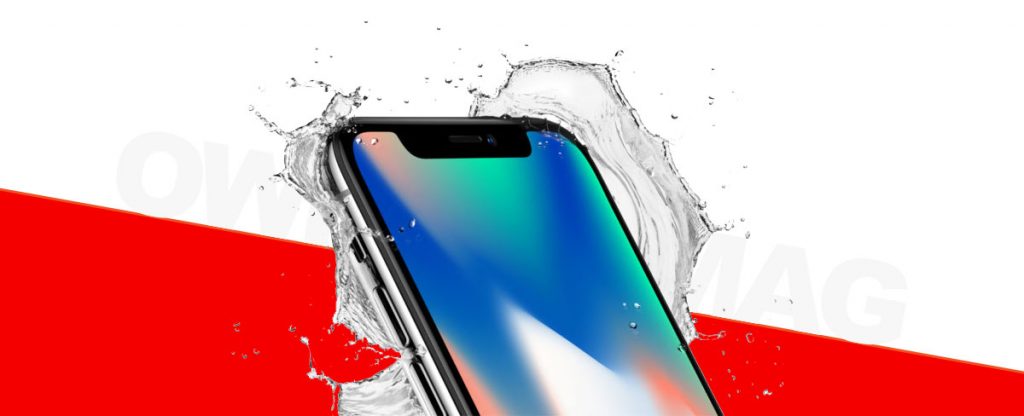Business
iPhone X – Everything You Need to Know
Published
8 years agoon
By
Khai Tran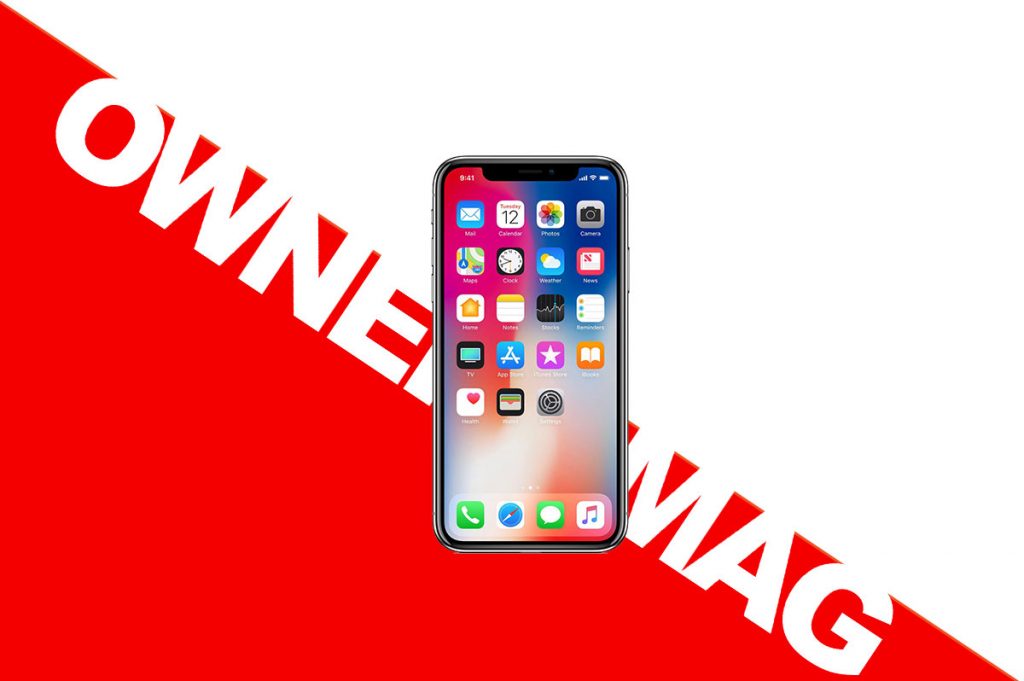
Here’s everything you need to know about the iPhone X. Apple recently debuted not one, but 3 iPhones. Much has been under speculation about the 10th anniversary iPhone that Apple’s been keeping under wraps. Ironically, as soon as Tim Cook announced how Apple would “double-down” on securing leaks, the internet started leaking more and more information about the new iPhone. So by the time Apple came around yesterday to announce the iPhone X, few were surprised by the revolutionary edge to edge OLED screen. This doesn’t mean we aren’t amazed or blown away by it, we were just not surprised.
So what exactly is the iPhone X? What are it’s features? What’s it useful for? How do you pronounce it? To answer those questions, we’re going to save you countless hours of reading as well as avoid watching people’s rehash of the Apple event on Youtube. This article will show you everything there is to know (and more) about the iPhone X.
1. The Specs
Color options: It will be available in Black and Silver.
Storage options: 64GB and 256GB
Price: Starting at $999
Front Camera: 7MP with TruDepth and FaceID
Rear Camera: Dual 12MP with OIS (Optical Image Stabilization)
Processor: A11 Bionic Chip
Dust/Water Resistance: IP67
2. How is it pronounced?
Let’s start here. It’s pronounced iPhone TEN, not EX. Don’t walk around like an uneducated fool calling it iPhone X.
3. Availability
Order on Apple’s website.
4. What’s it made of?
The back is made entirely of durable glass that Apple claims should be shatter proof. Stainless steel band wraps around phone.
5. Why is it call the iPhone X (Ten)?
Because of the iPhone’s 10th year anniversary. The first iPhone was released in 2007, and 10 years later is today’s 10th year anniversary. Technically, the iPhone 8 and 8 plus should be called iPhone 7S and 7S Plus given that it’s not a complete re-design. Apple’s usual trend in naming is that an iPhone deserves a full numerical bump if and only if it’s a complete transformation. Think back to the iPhone 3 to iPhone 4 overhaul. Remember how drastic the iPhone 4 was to the iPhone 5? And who could forget the dramatic change from the iPhone 5 to iPhone 6. The iPhone 8 and 8 plus are basically iPhone 7 in terms of design with internal CPU and camera upgrades.
So why isn’t it called the iPhone 7S then? Because this year Apple decided to break away from traditions. They went from 8 to 10 in the same year without batting an eye, so…I don’t think they care about 7S at this point.
6. New Screen
The iPhone X sports a 5.8 inch edge-to-edge Super Retina (2436 x 1125 OLED display), with a pixel density of 458 pixels-per-inch, and a 1 million to one contrast ratio. Having an OLED display of this caliber means the phone can support Dolby Vision and HDR10, HDR-ready display, 3D Touch, and True Tone support.
Being an OLED screen also gives you a richer and more “realistic” black color. In a traditional LCD screen when you’re viewing a black image, the screen still has to display some level of light underneath the darkened pixel. It can’t actually turn OFF the pixel and give you true-black. In the case of an OLED screen, it has the ability to completely turn off the Pixel, giving you an accurate true-black.
The OLED display is expensive, much more than the previous Retina LCD screens Apple used. This is one of the reason why the iPhone X starts at $999.
7. Home button
No. You swipe up to go home.
8. Rear Cameras
Get ready, this is going to be a long one.
The iPhone X has DUAL 12 MP camera one, one with wide-angle f/1.8 aperture lens and the other has telephoto f/2.4 aperture lens. But they’re not ordinary cameras. They come with dual Optical Image Stabilization to reduce motion blur and better images in low lighting. The cameras can now record videos in 4K at 60FPS and slow-motion videos at 240FPS. The lens can also zoom up to 10x for photos and 6x for videos.
In short, the front cameras are good…really good. Probably the best we’ve ever seen on an iPhone.
9. Front Camera (Selfie camera)
The front (selfie side) cameras are revolutionary. It’s a 7MP camera that takes better selfies than any other previous iPhones. The new Portrait Lighting mode allows users to take stunning selfies, adjust lighting in real-time, and cycle through different modes such as natural light, studio light, contour light, stage light and stage light mono. Portrait Lighting is supported by both the front and rear cameras.
The front camera is also capable of 360 Selfies and Augmented Reality, unlocking a world of possibilities for new app features to roll out in October.
The new “Selfie Scene” feature will utilize depth data (from TruDepth) to overlay your face over a variety of landscapes and scenes.
10. FaceID
FaceID stands for Face Identification. The 7MP front selfie camera can be used for unlocking your device and Apple claims it’s even secure enough to authorize Apple Pay. We’ve seen Facial Recognition in Sci-fi flicks but never imagined the day would come. Apparently Apple isn’t the first company to attempt Facial Identification. Samsung and a few other manufacturers have attempted this technology before however couldn’t make it secure enough for commercial use. Apple on the other hand, is able to make Face Identification secure and easy to use.
11. How does Face ID Technology work?
The front facing camera utilizes TrueDepth technology to map more than 50 muscle movements and points of articulation on your face. It will also adapt to your face over a period of time and Apple claims it can recognize you regardless of hairstyle, hats, glasses, facial hair, etc. It’s also smart enough to distinguish you from masks and photos of you. Is it reliable? Apple claims it’s a yes, however Face ID is currently an unproven biometric security measure. Only time will tell if it holds up.
12. A11 Chip
The iPhone X is being deployed with the all new A11 Chip. It’s a 64 bit 6-core processor, 4 High Efficiency cores and 2 Performance cores.
It’s faster + more efficient: In theory, with 4.3 billion transistors the 4 Efficiency cores are 70% faster than Apple’s A10 Fusion and the 2 Performance cores are 25% faster. In a nutshell, the new A11 Bionic chip is 30% faster and consumes 50% less power than the A10 chip. Apple claims it is the most powerful chip ever installed in a smartphone. The Neural Engine is said to be capable of 600 billion operations per second.
Good for gaming: The chip is also optimized for 3D gaming.
It can learn: The iPhone X is also capable of machine learning thanks to Apple’s Metal 2 platform.
Better Pictures: The A11 Bionic gives the front and rear cameras a significant boost by implementing Apple-designed Image Signal Processor (ISP). The new chip also allows the cameras to process pixels faster, better auto-focus under low lighting, and overall better image noise reduction.
Better Videos: The chip also has Apple-designed video encoder. This mean it can process frames faster and analyze images and motion in real time for improved video quality.
13. Better Life
Apple claims the iPhone X’s battery can handle 21 hours for just talk, 12 hours for internet usage, 13 hours for videos, and up to 60 hours if you’re just listening to music (not sure if this is through speaker or plugged in earbud).
14. Fast Charging Feature
The iPhone X is capable of “fast-charge capable,” meaning it can be be charged to 50 percent of battery life in 30 minutes. This is useful for fast moving business professionals and entrepreneurs.
15. Wireless Charging
The new iPhone X also comes with QI charging capability, meaning you can charge wirelessly. Upon release, you can purchase the Apple Airpower to charge up to 3 of your QI enabled devices at once without plugging anything in (except the Airpower mat). Pricing is currently unavailable, however you can get a Belkin mat for about $60 on Amazon. Also, more devices (including computer cases) are starting to have QI charging platforms built in. We recently reviewed a custom computer case call the Dark Base Pro 900 that features a QI charging platform.
16. Water and Dust Resistance
The new iPhone X is both water and dust resistance. Don’t be fooled into thinking you can go swimming with this. Apple claims the iPhone X has a rating of IP67 under IEC standard. Let’s break that down so you know exactly what IP67 means.
The 6: It’s 100% completely dust resistance, so you never have to worry about dust leaking inside and short circuiting components.
The 7: The phone can be submerged up to 1 meter underwater for at most 30 minutes.
So there you have it, it’s pretty good. But don’t go swimming with it, or try to take underwater shots.
There you have it…
That’s literally everything you need to know about the new iPhone X and more. The phone currently is sold out in most retail locations. Chances are you’ll have a tough time getting your hands on one of these. Fortunately, it’s being sold in 55 countries so someone on Ebay will be selling it for a ridiculous price. But hey…you were going to spend 1K on it anyway, what’s an extra few hundred?
You may like

Surprisingly, MLMs have become one of the most lucrative scams in recent years. But to sum it all up, its structure is only beneficial for those at the top, as they are the ones making all the money. Meanwhile, the new recruits are at the bottom, waiting for scraps.
Although various efforts have been underway to expose these pyramid schemes, many people still fall for them. It seems that the trend has never really died down, as we often see a new trend of scrappy moms and fresh-outta-college girls going ga-ga over these weird products. One of the more controversial is Elomir’s Axis Klarity.
Before this was launched, many distributors posted videos and images of themselves with photoshopped Post-its on their tongues. And of course, they were passing it off as a real product. Soon enough, the hashtag #Changetheconversation was plastered all over social media.
So, what could have gone wrong? Let’s go over the story of Axis Klarity and its parent company, Elomir.
About Axis Klarity and Elomir

Axis Klarity is a product created by Elomir, making a buzz in 2022. It still exists today, but seems to be operating under the radar. That said, let’s get to know it better.
If you’re familiar with those Listerine strips that dissolve on your tongue, then you’ll find this product to be similar. Only, instead of making your breath smell minty fresh, Elomir claims that it’ll improve your mood, calm your mind, and increase your cognitive abilities. How does it do this, exactly? Who the f*ck knows? Their website doesn’t explain much.
It does offer a few testimonials, mostly from women who happen to be distributors. There is one testimonial from a 13-year-old girl, claiming that Axis Klarity had helped her in school.
There’s only one problem with that: on the bottom of their website, in tiny print, Elomir states that their flagship product is not intended for those under 18.
Strange. But I’m sure it’s nothing, right?
Red Flags… Red Flags Everywhere!

Now, here’s the deal with Axis Klarity; the ingredients are alarming.
Before Axis Kalrity’s launch date, people searched their website for an ingredient list. Here’s what’s in these “cure-all” yellow strips:
- Curcumin Conjugate
- NAC Conjugate
- Thiamine Conjugate
First off, there’s really nothing here that would cause a change in mood, clarity, or any other benefits listed by their distributors. But what’s even shadier is the ingredient “NAC Conjugate.” This is an antioxidant that should be inaccessible to the general public.
So how does Axis Kalrity, an unregulated supplement, include this ingredient? It seems that the FDA is pretty lax about NAC Conjugate, despite declaring that it is not a supplement. Unless a company is promoting their NAC Conjugate as a cure-all, they don’t have to worry about the FDA busting down their door.
Still, I personally wouldn’t take prescription drugs from an unregulated source (unless I’m trying to party).
Okay, so we now know the product is crap. But what about their business practices?
For the longest time, Axis Klarity was in this “pre-enrollment phase”. It’s basically like preordering a game on Origin, but surprisingly shadier. Because instead of preordering products, people were signing up as future sellers. Before making any actual sales, Elomir was already making millions off recruitments alone.
But that’s not all. When Elomir finally launched their knock-off dental strips, it was a MASSIVE flop. Hundreds of orders went unfulfilled, as the number of products they had in stock couldn’t cover the number of people buying them. Still, Elomir took the money from everyone who ordered, offering no refunds.
The company later claimed that this ordeal was due to machinery issues. But anyone with a brain could tell that they were simply unprepared.
Elomir continues to push forward, promoting Axis Klarity with flaky testimonials while their distributors and customers lack compensation for their orders.
Conclusion

It’s an MLM, through and through – ‘nuff said. If you’re thinking about buying Axis Klarity or becoming a seller, just… don’t. I recommend saving your time and money by purchasing some of those Listerine strips. You’ll actually get what you pay for.
Featured image from Elomir
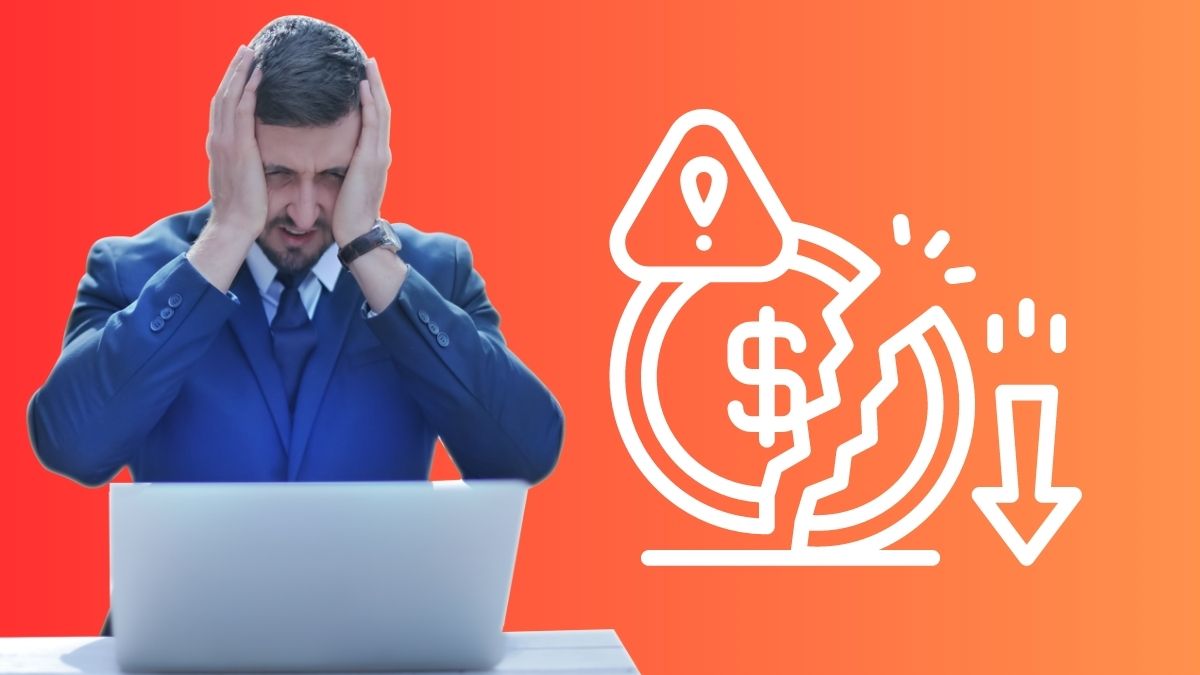
How can you recession-proof your business?
This is a common question among business owners who are concerned about how well they will fare in an unpredictable economy.
Whether or not we’re officially in a recession, many companies are feeling the pressure—rising costs, shifting consumer habits, and ongoing market uncertainty. While no business is completely immune to downturns, there are practical strategies you can adopt to strengthen your resilience.
But what is a recession-proof company?
A recession-proof company is a business that can maintain stable revenue and demand even during economic downturns. These ventures typically offer products or services that consumers continue to need regardless of financial conditions.
In this guide, we’ll explore key ways to make your business more recession-proof and help you navigate today’s challenges with confidence.
Are We in a Recession?

The term “recession” often sparks panic, but its technical definition is more specific. A recession typically refers to two consecutive quarters of negative gross domestic product (GDP) growth.
As of 2025, many economies have shown signs of slowing down, like higher inflation, cautious consumer spending, and volatile markets. However, most experts agree we are not currently in a formal recession.
Key indicators, such as GDP growth, employment rates, and consumer demand, remain relatively stable in the U.S. and many parts of the world. Still, uncertainty looms due to persistent global conflicts, supply chain disruptions, and high borrowing costs.
Even if we’re not in a recession by definition, businesses are feeling the squeeze. That’s why preparing now and building a recession-proof business is crucial to staying strong through future economic shifts.
Will There Be a Recession?
Predicting a recession is tricky, and even seasoned economists debate its timing. While the economy may not be in a technical recession today, many experts warn that a downturn could still happen in the near future. High inflation, fluctuating interest rates, and global instability keep businesses on edge.
That’s why building a recession-proof business now is a smart move. Some industries can weather economic storms better than others. What business does well in a recession, and what sells best in a recession? If we look back at history, the ventures that thrived in the 2008 recession included:
- Discount retailers
- Repair services
- Healthcare
- Essential goods providers
These businesses focused on solving everyday problems and offering cost-effective solutions, something customers prioritize when money is tight.
On the flip side, the worst businesses to start during a recession are often those that rely on:
- Luxury spending
- Large capital investments
- Non-essential services (high-end travel, event planning, niche hobby stores, etc.)
These ventures typically struggle when consumers cut back on discretionary spending.
Even if the next recession doesn’t arrive tomorrow, building flexibility and resilience today will help you prepare for whatever comes next.
5 Ways to Recession-Proof Your Business
If you’re a business owner concerned about the economy, these 5 tips can help.
1. Find Low-Cost Solutions
Survive a recession by saving money. Brilliant, right? But this isn’t just about cutting temporary costs to weather the storm. To truly recession proof your business, you need to set up for the future.
Some businesses choose layoffs and department closures when times are tough, but this shouldn’t be your first resort. For starters, think about scaling back your operating costs. Consider migrating to cloud storage, or finding cheaper software alternatives.
For example, many businesses rely on freelancers to supplement their creative team, which can start to add up when you need a lot of designs.

You might find that you save money by switching to a subscription-based graphic design service like Penji. Check out our review to see why we recommend it. You can also sign up with our special 35% off promo code — PREP35.
2. Put People First
In a recession, you may have to scale down your business operations, and that can mean letting people go. But if you intend to survive the recession, mass layoffs may do you more harm than good.

A business is made up of people, and each worker plays a role in developing your brand’s unique personality. Layoffs can sour long-term relationships, but they can also change who your company is on a fundamental level.
In a recession, some downsizing might be inevitable. But to recession proof your business, aim for transparency. Talk to employees about your difficult decisions, let them know where you’re cutting costs and what prospects may look like down the road.
3. Rethink Your Architecture
Every application has an architecture. If you produce tech, you can recession-proof your business by rethinking how you deliver it.
For example, you may consider a microservices architecture, which is sometimes less expensive than a singular (“monolithic”) setup. This considers each element of your service as its own mini-service.
For instance, an ecommerce site might use different services for accessing a user’s account, their shopping cart, and processing their payment. The user still sees one website, but under the hood, they’re accessing different services.
4. Demonstrate Your Value
Chances are, you’ve already given a lot of thought to what, exactly, your business offers. It should be at the core of all your marketing materials, your whole brand strategy.

But to recession-proof your business, you’ll need to double down. It’s not just, “What can we do for you?” It’s, “Why do you need us?”
Some of the best ways to demonstrate your business’ value include:
- Money saved
- Life improved
- Everyday problems solved
- What sets you apart from competitors
5. Be Flexible
On the one hand, you want to hold onto your business fundamentals to survive a recession. Your people, your values, your product. But when something needs to change, you can’t afford to be too precious about your current processes.

Be willing to make changes, but make informed ones. Test out new messaging, new products, new pricing models. If your ads are losing ROI, it might just be a sign of the times, but it’s worth looking into different strategies that could give you a boost.
You might think that in order to recession-proof your business, you need to avoid showing signs of weakness. The fact is, the most stubborn businesses are often the first to go.
Markets change a lot during a recession. When you come out the other side, you want to be ready to meet whatever new challenges come your way.
The Lowdown
Learning how to recession-proof your business isn’t about avoiding risk but creating stability in an unstable economy.
While you can’t control the economy, you can control how you prepare. Focus on cutting unnecessary costs without sacrificing your team, demonstrate clear value to your customers, and stay flexible with your strategies.
Businesses that survived the 2008 recession didn’t just hold on; they evolved. The best way forward? Start building resilience now so your business can thrive, no matter what the market throws your way.

McKinsey & Company reveals that 73 percent of bank transactions worldwide now take place online, such as in digital banks and payment systems. The increasing demand of customers for more flexible banking options is attributed to the rise in online banking channels. People prefer online banks because they offer simple tools and resources to manage their money. With this trend, online banking is here to stay.
Best Online Banks: A Quick Guide
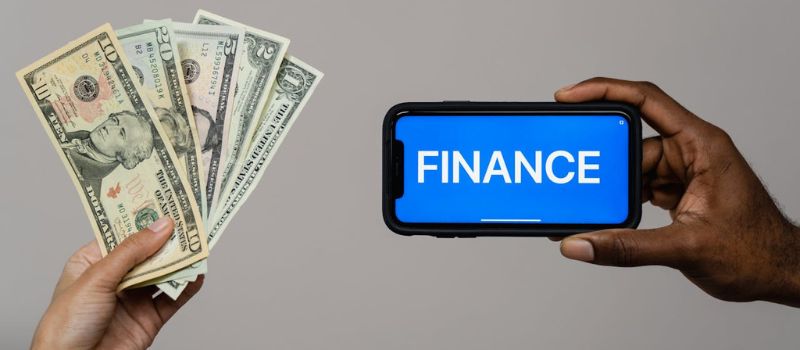
Image Source: Tima Miroshnichenko from Pexels
An online bank should cater to your financial needs like any traditional alternative. Here are a few factors to consider when choosing online banks:
Annual Percentage Yield (APY)
The annual average yield offered under each account will tell you how much interest your money will earn. When comparing online banks, consider one that offers competitive rates across all of its deposit accounts.
Products and Services
Some online banks offer a complete package of banking products, including checking, savings, certificates of deposit (CDs), and money market accounts. They also offer loans and credit cards. So, look at the products and services offered by online banks before making a decision. You may also combine the services of an online bank with a traditional brick-and-mortar bank.
Account Access
Typically, online banks offer 24/7 access to your account through their website or app. However, you should also consider how the bank handles deposits and withdrawals. It is crucial to know the restrictions, if any, on transfers, the limitations on withdrawals, and whether the bank accepts free cash deposits.
ATM Network
An ATM network is essential if you frequently withdraw or deposit cash. An extensive ATM network will help you avoid transaction fees. If the bank is not associated with a large ATM network, you should look for one that will reimburse out-of-network ATM fees.
Digital Tools
The best online banks offer innovative digital tools to help you accomplish financial goals. For example, Ally will help you organize your savings goals with savings buckets and analyze your spending habits to safely transfer available funds from your checking to your savings account.
Fees
You should avoid any bank, online or otherwise, that charges monthly fees or has extensive requirements to avoid them. Many online banks offer no-fee deposit accounts, require a low or $0 initial deposit to open the account, and don’t need a minimum balance to avoid maintenance fees. However, make sure you know whether the bank charges excessive withdrawal fees, paper statement fees, or fees for other services that you may want to use regularly.
Customer Service
Since you won’t have access to in-person customer service with an online bank, determine how you can contact a customer service representative if needed. Most online banks offer telephone support, live chats, or assistance via email. Some online banks also offer access to live support via extended hours or 24/7.
10 Top-Performing Online Banks

1. Alliant Credit Union
Alliant Credit Union is an NCUA-insured online credit union offering members competitive deposit account rates and minimal fees. Most accounts don’t charge maintenance fees, but these can be waived if you sign up for e-statements. Membership is available for current or former employees of Alliant’s partner businesses in the US. You can also become an Alliant Credit Union Foundation digital inclusion advocate to become eligible for membership. Signing up costs $5, but Alliant will pay the one-time fee on your behalf.
Alliant’s certificates earn solid APYs, with terms ranging from one year to five years. Its savings account earns a respectable yield of 3.10% APY on balances of $100 or more, but there are plenty of higher-yielding savings accounts with APYs over 5%. We like that Alliant’s High-Rate Checking account pays a better yield than other checking accounts and doesn’t require a minimum balance or charge service fees.
2. Varo Bank
Varo offers checking and savings accounts but doesn’t offer deposit certificates. Savings account comes with an APY starting at 2.50%. That rate becomes 5.00% for the first $5,000 if a customer meets the monthly requirements of the bank.
Cash deposits have limits and fees, and Varo customers can only deposit cash at a 3rd party retailer that joins the Green Dot network, including CVS, 7-Eleven, or Walgreens. On the other hand, cash withdrawals can be made through an ATM in the Allpoint network for free.
3. Ally Bank
Established in 2009, Ally Bank is full-service online bank that offers competitive rates on all deposit accounts. Customers can enjoy the highest rates for all balances, regardless of tier. Overall, the high APYs, minimal fees, and reliable customer service support makes Ally an excellent banking solution for millenials who want better savings and retirement plans.
4. Discover Bank
Discover Bank offers deposit accounts, credit cards, personal loans, and student loans. We like that Discover offers deposit accounts, such as CDs, savings, and a money market account, at competitive rates with no fees. While its $2,500 minimum deposit requirement for its CDs is steep, there is no minimum deposit required to open and maintain a savings, money market, or checking account.
5. Laurel Road
Laurel Road, powered by KeyBank, helps healthcare and business professionals achieve their financial goals. They offer student loan refinancing, mortgages, personal loans, credit card, and specialized savings accounts. Laurel Road also offer Loyalty Checking with a low APY. New customers can earn a sign-up and monthly bonus with qualifying direct deposits. In addition, both savings account and checking account has no monthly free or minimum balance requirement.
6. Capital One
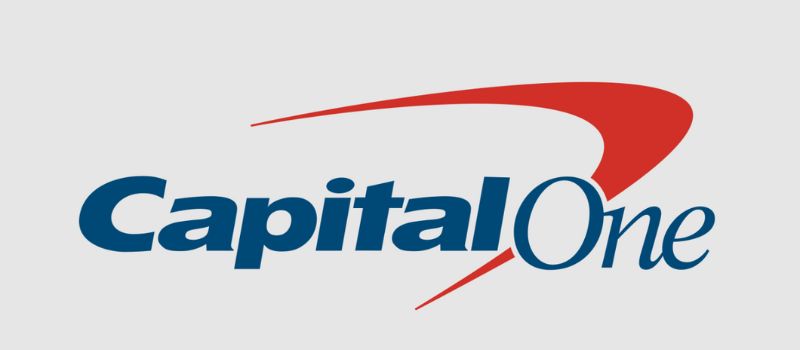
Capital One offers an above-average 3.80% APY on its savings account, strong rates on its certificates of deposit, and 0.10% APY on all checking balances. All accounts are free, and customers can access over 70,000 free ATMs.
7. American Express National Bank
This bank offer High Yield Savings Account with a 3.80 APY. Likewise, certifcate deposits (CDs) have competitive rate and there is no minimum opening deposit. You don’t have to worry in case you encounter banking-related issues because American Express National Bank has 24/7 phone support and online chat support.
8. Marcus by Goldman Sachs
Launched in 2016, Marcus is the online-only banking arm of Goldman Sachs, one of the 15 largest banks in the US. The bank’s savings accounts and CDs offer competitive yields and no monthly maintenance fees.
While some online banks offer no minimum deposit requirement to open an account, Marcus requires a $500 deposit to get started with a CD. There’s no minimum deposit requirement for its high-yield savings account. Marcus doesn’t offer a checking account or money market account.
9. My Banking Direct
My Banking Direct is the online-only arm of Flagstar Bank, N.A., which New York Community Bancorp owns. The bank is a lean financial service that offers only savings, checking, and a five-month CD term. The APYs on its savings account and CD are among the best available today.
In addition, the bank doesn’t charge monthly or overdraft fees and provides surcharge-free ATM access through a 55,000 Allpoint and Presto network. To open a savings account, you must deposit $500. Checking accounts can be opened with just $1. During the week, you can access extended customer service hours until 8 p.m. ET and 2 p.m. ET on Sundays.
10. SoFi
SoFi (short for Social Finance) was the brainchild of Stanford Graduate School of Business students who created an alumni-funded lending source initially focused on refinancing student loans. Since then, SoFi has expanded into a variety of loan categories and now offers online checking and savings accounts.
Conclusion
Online banks lets manage your money and account via a website, mobile device, or app. Also, online banks generally offer higher interest rates and fewer fees than traditional banks. You should remember that while technology makes everything accessible, online banks also have some limitations. For instance, online-only or internet-only banks lack in-person interaction. However, if you are comfortable managing your money online, online banks are a convenient and low-cost option.

Top 10 Small Business Organization Tools for 2025

8 Best Equipment for YouTube Every Content Creator Needs

Why Having an Advisory Board Could Make or Break Your Startup

Best Gift Guide for Men: Perfect Gifts for Every Occasion

What’s the Deal With Elomir? Is Axis Klarity a Scam?

The Best Ways to Recession Proof Your Business

Discover 2025’s Top 10 Online Banks for Smart Savings

What’s the Deal With Elomir? Is Axis Klarity a Scam?

Why Having an Advisory Board Could Make or Break Your Startup

Loom Review: Features, Use Cases, and How It Stacks Up Against Zoom

8 Best Equipment for YouTube Every Content Creator Needs

The Best Ways to Recession Proof Your Business

Top 10 Small Business Organization Tools for 2025



